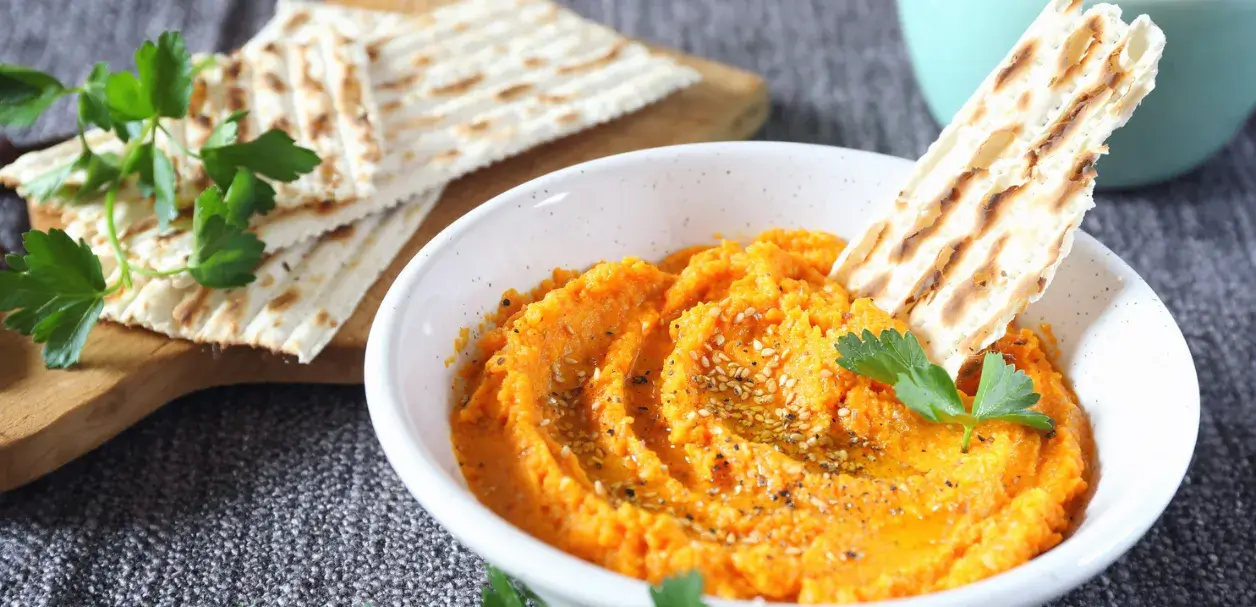As children learn to read, we teach them to sound out each letter as they move along the word. Makes sense, right? But what happens when they come across a word with a double consonant? They often try to sound the letter out twice, stumbling in the process. Words like “butter” wind up sounding more like “but-t-er,” making it harder for kids to understand.
Giving your child practice reading words with double consonants will help their reading fluency, as well as improve their spelling. Explain that there are words that always include double consonants, such as small or kiss, and words where we double the final consonant when adding an ending. Think “cut” to “cutter,” “big” to “bigger,” or “run” to “running.”
A fun and delicious way to practice double consonants is by making this carrot hummus recipe with your child. Join the VIP Vault for free to get an easy-read PDF of the recipe, then start by encouraging your child to find all the words in it that feature double letters.
Bonus: If your child has a good grasp on the difference between long and short vowel sounds, share with them that double consonants in a word typically mean the first vowel will be a short vowel sound. For example, “cutter” has a short u sound, not to be confused with “cuter,” which has a long u sound. Similarly, “bitter” has a short i sound—very different from “biter” with a long i sound! (I teach this concept with the saying, “long word, short vowel.”)
Important: This recipe involves using a blender or food processor, so grownups should take the lead on that part. Before you get started, make sure you have a bowl and blender or food processor on hand as well as a pan and spatula.
Tips for teaching kids to read with this recipe:
- Introduce your child to how recipes work. If you’re not sure they know them already, be sure to explain vocabulary like “ingredients” and other cooking terms, such as “drain” in this recipe. One of the key underpinnings of literacy is understanding vocabulary.
- Watch out for specific words in the recipe they may not be familiar with, and give a simple definition.
- Keep an eye out for tricky-to-read words, such as “oil” and “juice.” Point out letter combinations that might be new or less familiar to your child.
- For little ones who aren’t reading much yet, just pointing out what you’re reading and emphasizing a few key words or letters is enough. If you make the recipe again, you can help them find the words you pointed out before.
- Use this as an opportunity to show them punctuation, as well as words and letters. Point to the commas, periods, or other punctuation marks, and explain what they mean.
- If they can’t read the recipe on their own, give them chances for success by asking them about what they do know, gently underscoring key knowledge. E.g., ask, Can you find all the words with double letters? or How many times do you see the word carrot?
- For kids who are reading already, encourage them to read the recipe themselves. If they have trouble, just calmly help them with any words they can’t quite get. E.g., if they have trouble with the word “chickpea,” try covering “pea” and helping them read just the first part of the word before you uncover the rest.
- Bring your patience. Give your child space to read a word (or identify a letter) before you jump in, but be prepared to help if they’re showing signs of frustration.
Easy Recipe for Kids: Carrot Hummus
- Chickpeas (1 can)
- Shredded carrot (½ cup)
- Salt
- Pepper
- Oil (1 tablespoon)
- Lemon juice
Step 1:
Heat a small bit of oil in a pan.
Step 2:
Add the shredded carrot to the pan. Cook the carrots until they are soft.
Step 3:
Drain the can of chickpeas, but save the water.
Step 4:
Put the carrots and the chickpeas in the blender. Add some oil, lemon juice, salt, and pepper. (If the mix is too thick, add a little chickpea water to make it thinner.)
Step 5:
You made yummy hummus! Dip chips or veggies in it. Enjoy!
If you enjoyed this recipe, please share it!

